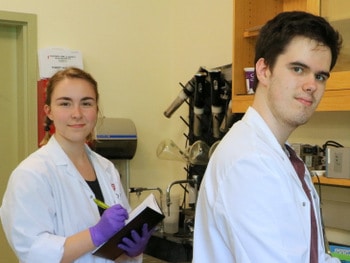
The wastewater treatment process requires aeration in order to properly provide the microorganisms oxygen necessary to break down organic material in the water. If the level of aeration is too low, the microorganisms will not function at their full capacity, and if the level is unnecessarily high, the treatment plant is needlessly spending money on energy with no increase in productivity. This project explores the minimum dissolved oxygen level necessary for the microorganisms to function efficiently, while keeping the energy costs for the treatment plant to a minimum.
Dissolved oxygen (DO) probes were placed in the flasks containing wastewater samples to monitor the rate of consumption of DO throughout the test period. The flasks were intermittently aerated to provide repetitive results. During periods of active oxygen consumption, a linear decline was observed for the majority of the samples. The DO level at which the rate of consumption slowed was considered the minimum constant level that could be held while allowing the microorganisms to still operate at their capacity.


 Acadia University
Acadia University